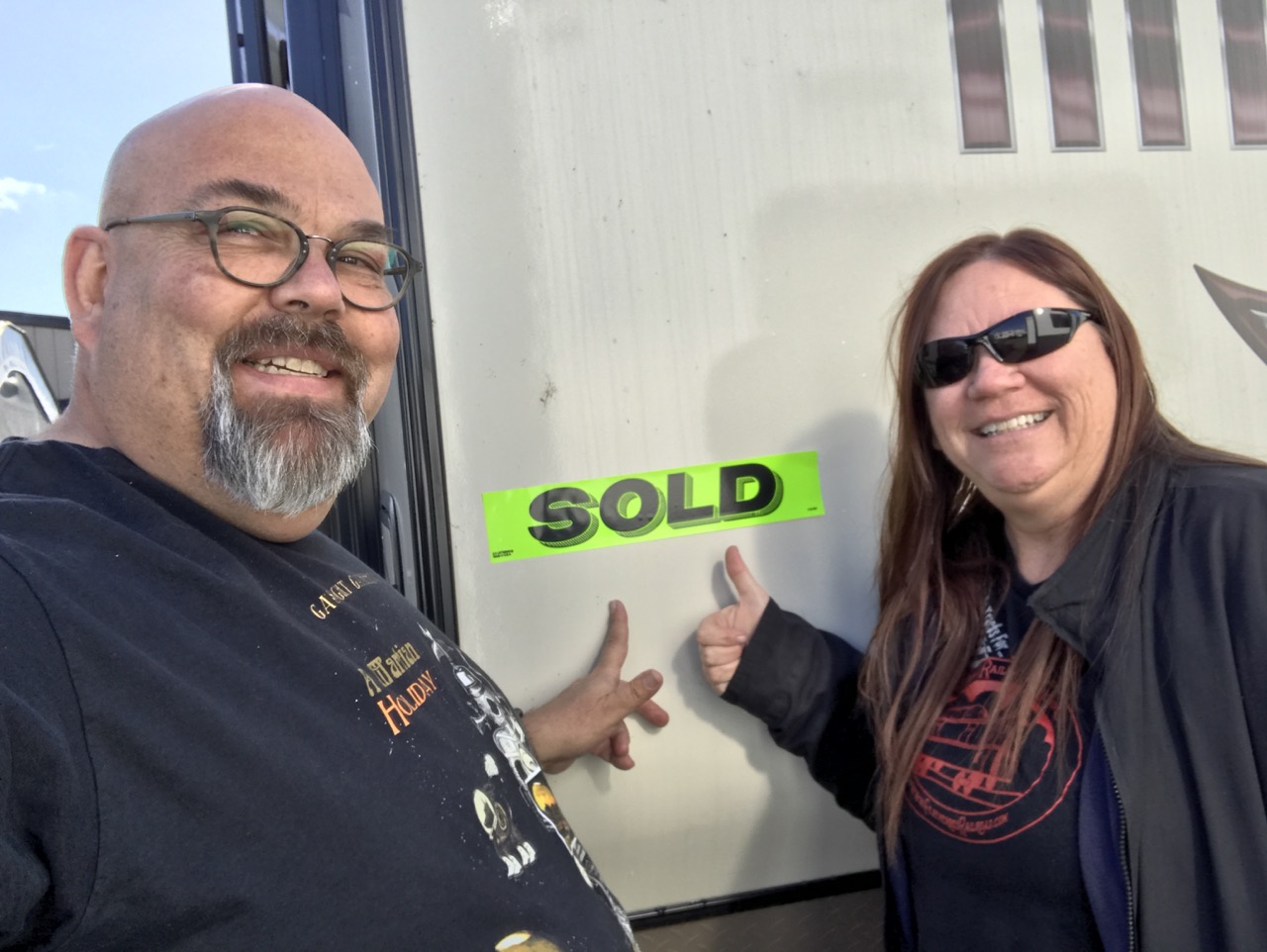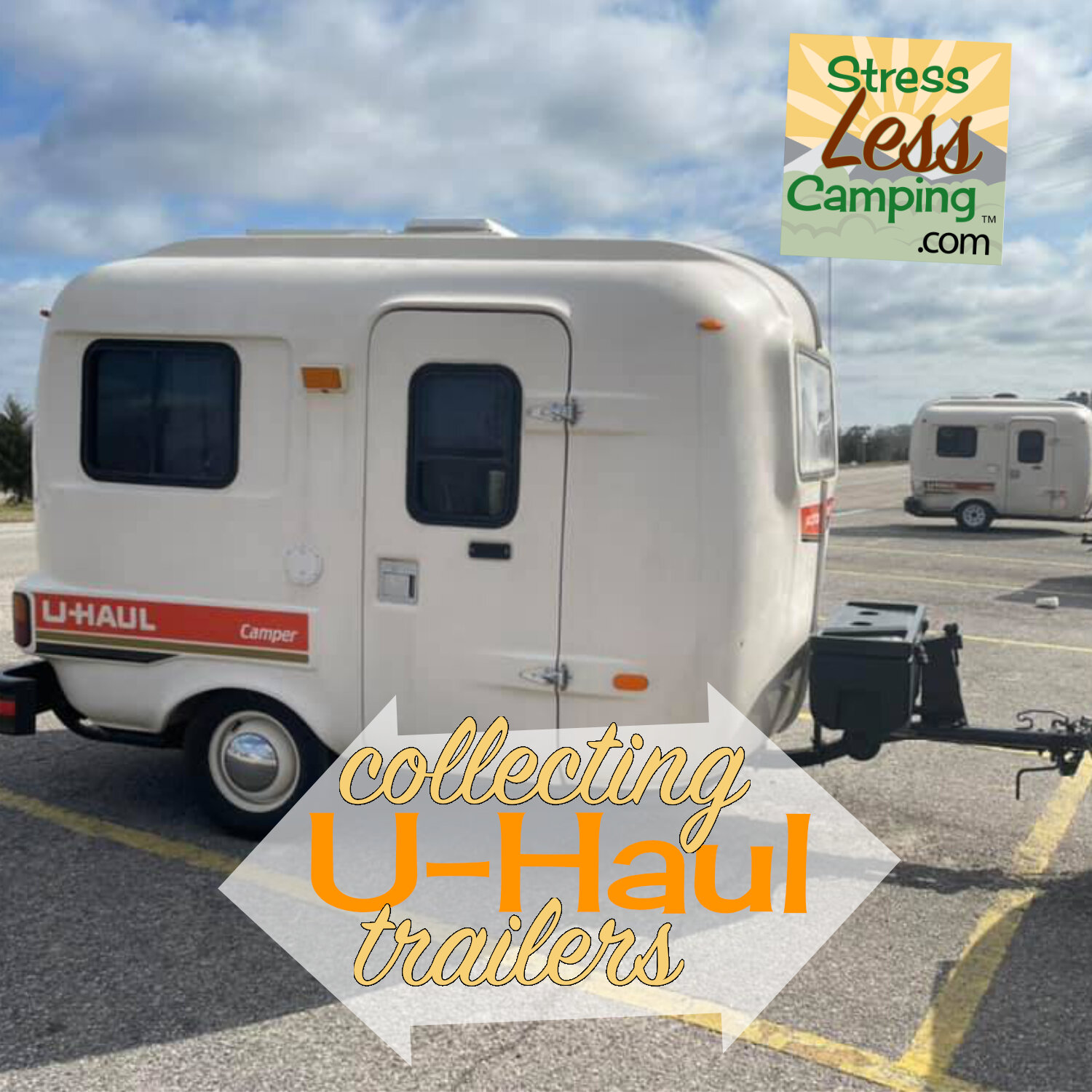History and Collectibility of the Spartan Aircraft Company trailers
The very collectible Spartan trailer
The Spartan Aircraft Company was a manufacturer of exceptional trailers after World War II that are still highly sought after today. They were so well made, even one that is not well cared for may still be a solid candidate for restoration and their value can surprise those not familiar with them.
From just after World War II until the early 1960s Spartan Aircraft Company, in Tulsa, Oklahoma, made a variety of trailers from single-axle models to huge mobile homes that were beautifully crafted and still remain show pieces today.
Spartan Aircraft Company history
Oil was a powerful influence in the early 1900s for Tulsa, Oklahoma. After discovery of oil several Tulsa residents became very wealthy including people like William G. Skelly and J. Paul Getty.
In fact Skelly was able to pursue some of his other interests with the money he was making from oil including interests in flying machines. While his oil company was growing to be the largest in the world he was excited by airplanes and sponsored the Air Adventures of Jimmie Allen and Captain Midnight radio shows.
In 1928 he furthered his interest in the field of aviation by founding the Spartan Aircraft Company. Fellow millionaire J. Paul Getty visited Spartan in 1939 and was so impressed that he ultimately bought the company.
When World War II broke out J. Paul Getty tried to enlist, going directly to the Secretary of the Navy Frank Knox. Instead, Knox told Getty he would serve his country better if he helped manage Spartan Aircraft to help with the production of planes for the war.
As such Getty fully cranked up production of planes for the war with a contract to build the Navy trainer Spartan NP-1. Once the war was over, though, the factory didn’t need the incredible production capability it had built up during war times.
Like many other companies that had geared up for war production, Spartan found itself in a quandary with capability in manufacturing and engineering. In fact a five-passenger plane was engineered and tested very successfully but Spartan wasn’t the only game in town with many other manufacturers around that were also quite capable and well-equipped to build planes.
Spartan also experimented with a rather radical automobile design. Both the planes and the automobile shared the fact that there was a long lag time between the design and testing and actual production, leaving the manufacturing capability just sitting there. Plus the risk and cost of tooling up for such an endeavor was another risk not necessarily worth taking.
With incredible demand for housing after World War II Getty determined that making trailers was the best direction to take the company. The company brought a lot of their aircraft manufacturing expertise over, including using a semi-monocoque construction that was a first in the RV business. In monocoque construction, the chassis and body are built as a single, integrated structure.
In order to secure demand the company hired designer G.R. Schutes to give their product a modern look and he did, indeed, creating a streamlined, almost art deco look to the trailers. The interiors, too, were quite lavish and beautiful with lacquered woods and built-in appliances and lighting fixtures.
While many trailers were simply boxes on wheels the Spartan models had compound curves in the metal and curved windshields. Having a Spartan trailer was a statement then as much as it is today.
Expensive
In the 1940s you could buy a new home including the land for about $8,000. Considering that, a Spartan was no inexpensive investment at about $4,000 for the 25 foot Spartan Manor. There were further models stretching up to 35 feet in length with price tags to match.
Spartan responded to changing realities in the marketplace creating their “homes” in ever more lavish form with interiors reflecting all the modern trends of the time. There was also a large number of Americans who would chase work around the country, in some ways similar to today’s realities.
These people needed something truly built to withstand the travels of chasing work but lavish enough to be called home. In fact, even Spartan called their products homes.
Build quality
Compared to modern trailers, the vintage Spartans often may not have lavish bathrooms or folding sleeping accommodations. Typically the more towable models like the Manor and Spartanette may not even have holding tanks. You’ll certainly never find air conditioning in any of these from the factory; however they were heated and the large Coleman heater is one of the things I’ve seen many restorers take out.
Yet these heating systems were ducted throughout the coach creating a really nice heating experience.
The exterior of the trailers were all aluminum including the roof so it is not a surprise when you find one that might look slightly rough but still hasn’t leaked despite sitting outside for decade. Where water intrusion is more common is in things like the flip-up vents on the roof or at the windows. Like all flexible seals, the seals in these places can dry and crack over time, allowing water in.
Still the shells of these trailers is fairly impervious to water damage so those who have moderately decent skills with wood might find a Spartan to be a great candidate for restoration.
Models
Originally Spartans were really nice travel trailers that were uniquely built and nicely finished. But the line grew with the Manor, Spartanette, Mansion and Royal Mansion in 1949.
The Manor was slightly more formal and is pictured as the main image for this article. The Spartanette had an almost egg shape and the Mansion was just that, a larger model available as the Royal Mansion at 31 feet in length. You could have a Spartanette for just under $3,000 but the Royal Mansion would set you back almost $4,700.
The 1950s brought tandem-axle versions of the Spartanette, which was the most like a traditional travel trailer. Later the Mansion begot the Royal Mansion stretching to almost 34 feet in length. By the late 1950s there were Imperial Mansions as long as today’s triple-axle fifth wheels and later years brought about the Executive Mansion at almost 49 feet in length.
By 1962 the Spartan product line had grown to 19 different models with the largest measuring ten feet wide and 57 feet long! The company employed a fleet of 29 two-ton International trucks to deliver the larger mobile homes.
Light weight
Looking at the Spartanette on a friend’s lot there were a few folks wondering just how heavy that beast was. But, surprisingly, Spartan trailers were relatively light by today’s standards. That 1950 Spartanette probably weighs less than 4,000 pounds owing the the aluminum skin and monocoque construction.
Furthermore older trailers rarely had air conditioners or large holding tanks, if they had holding tanks at all. So what might seem like a huge trailer could weigh less than a modern trailer. Consider something like the Rockwood Mini Lite 2205s which stretches 23’ 10” and weighs almost exactly 5,000 pounds.
For a variety of reasons these older trailers aren’t as heavy as some might think.
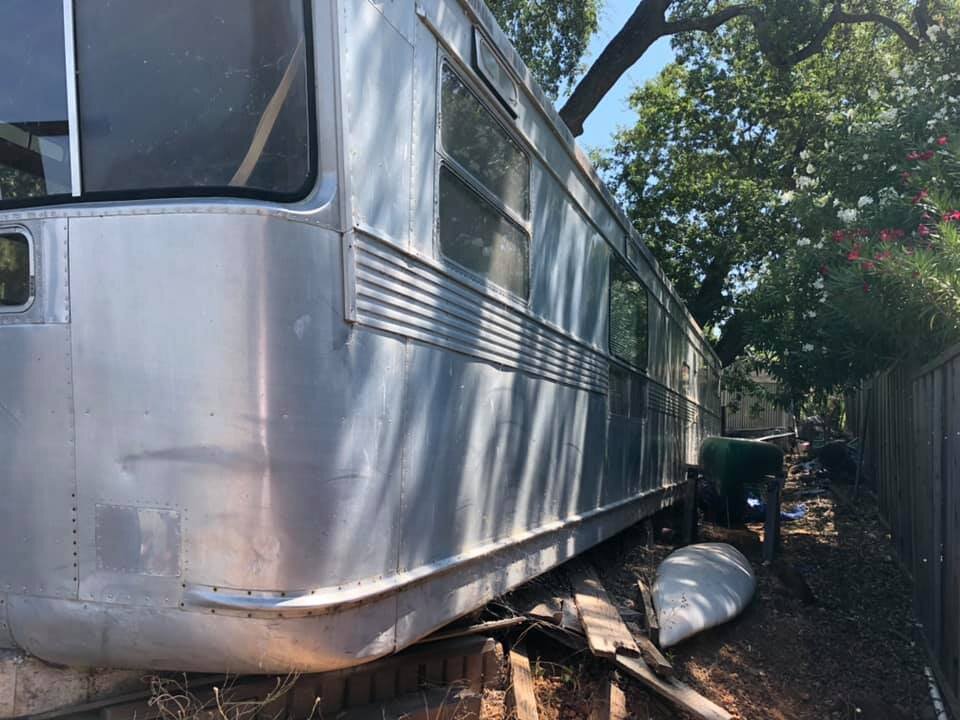
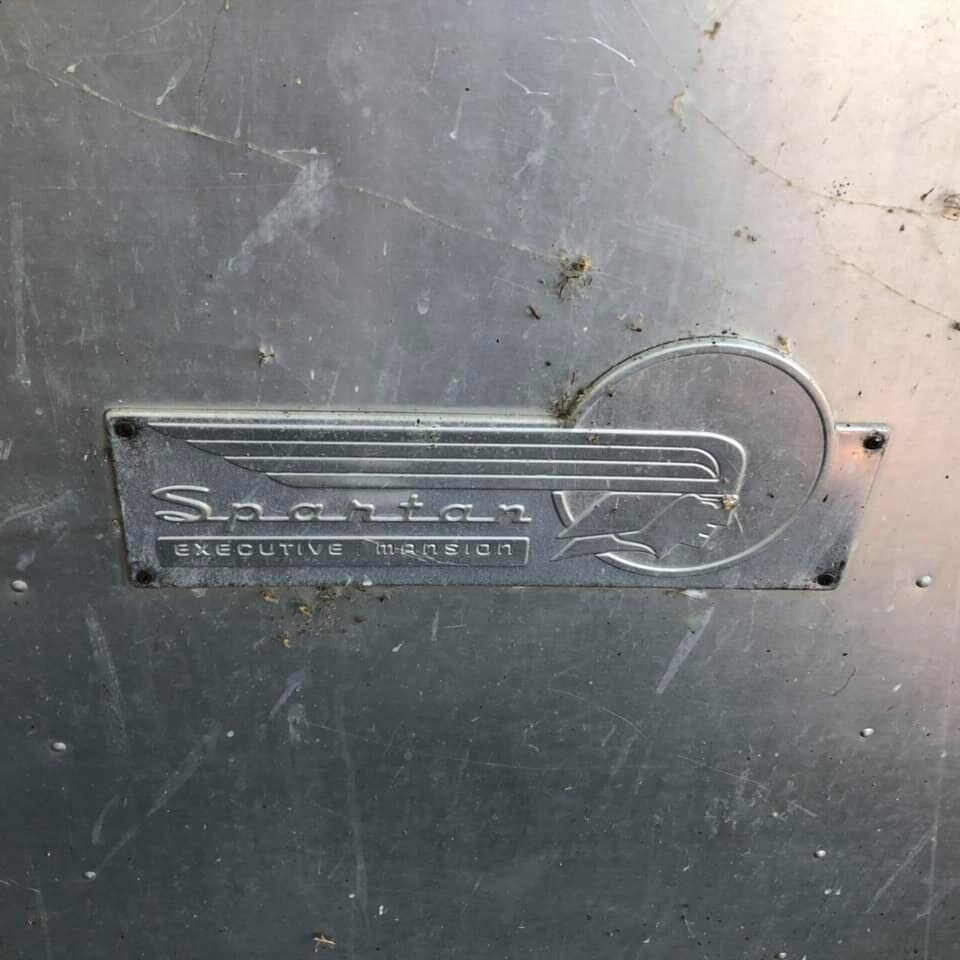
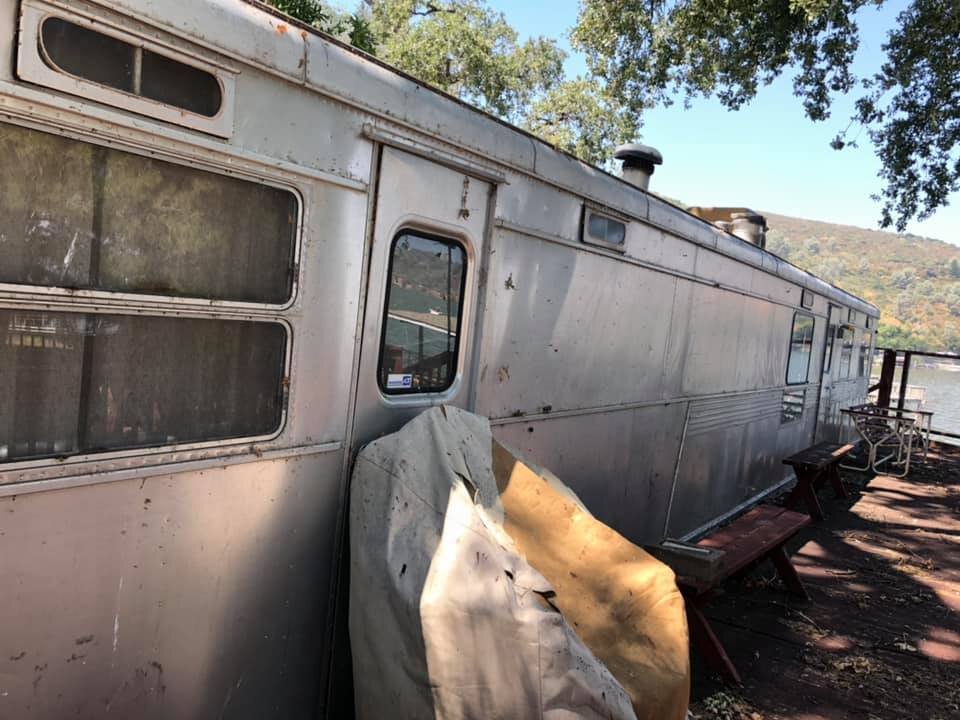
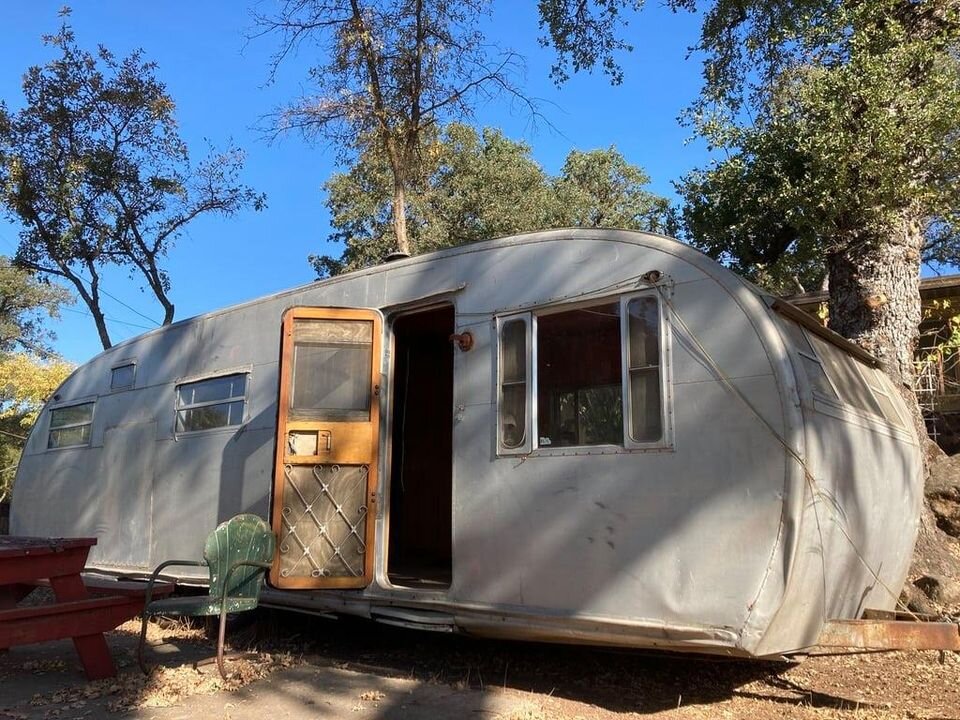
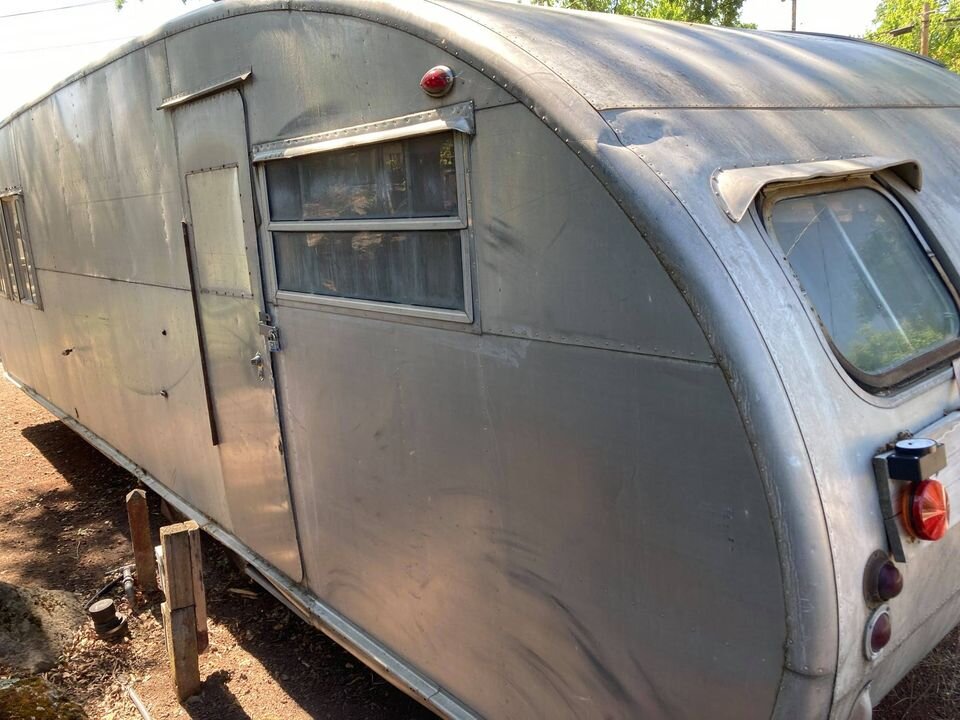
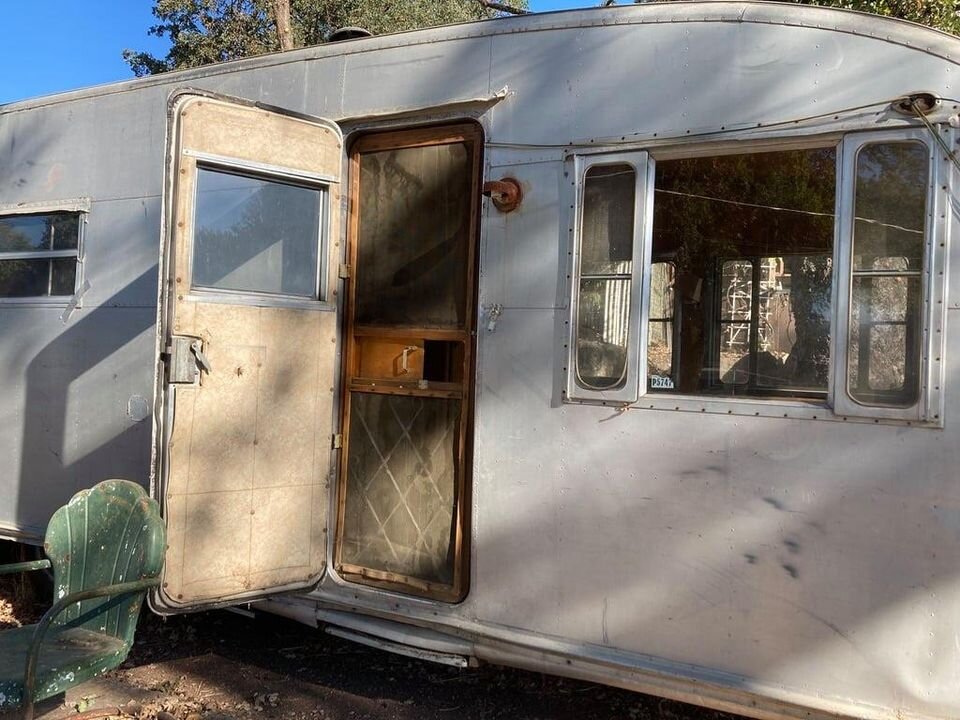
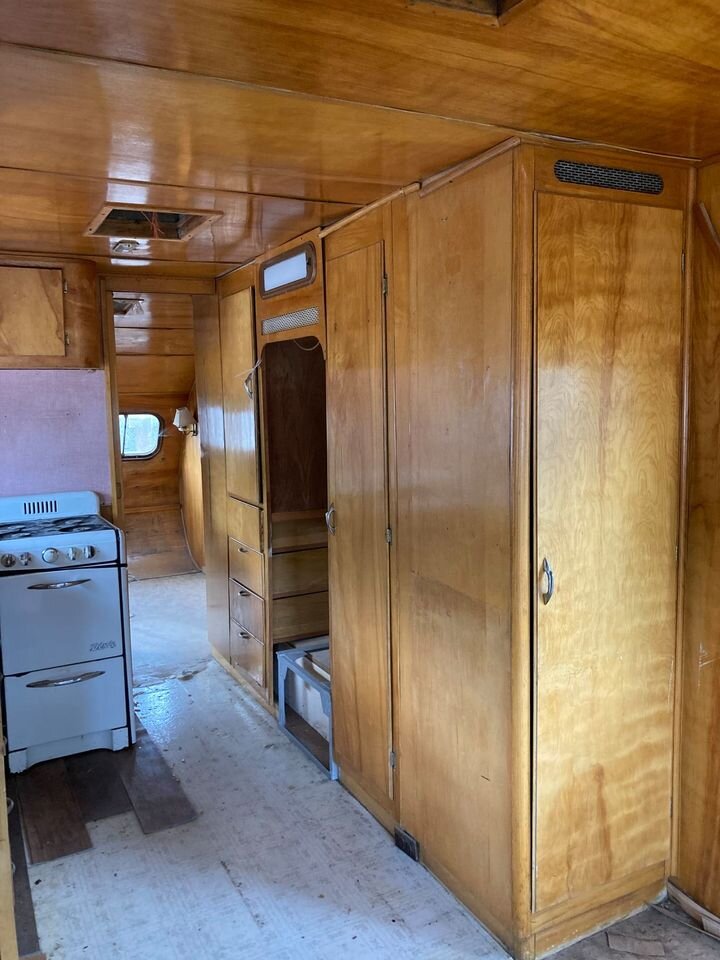
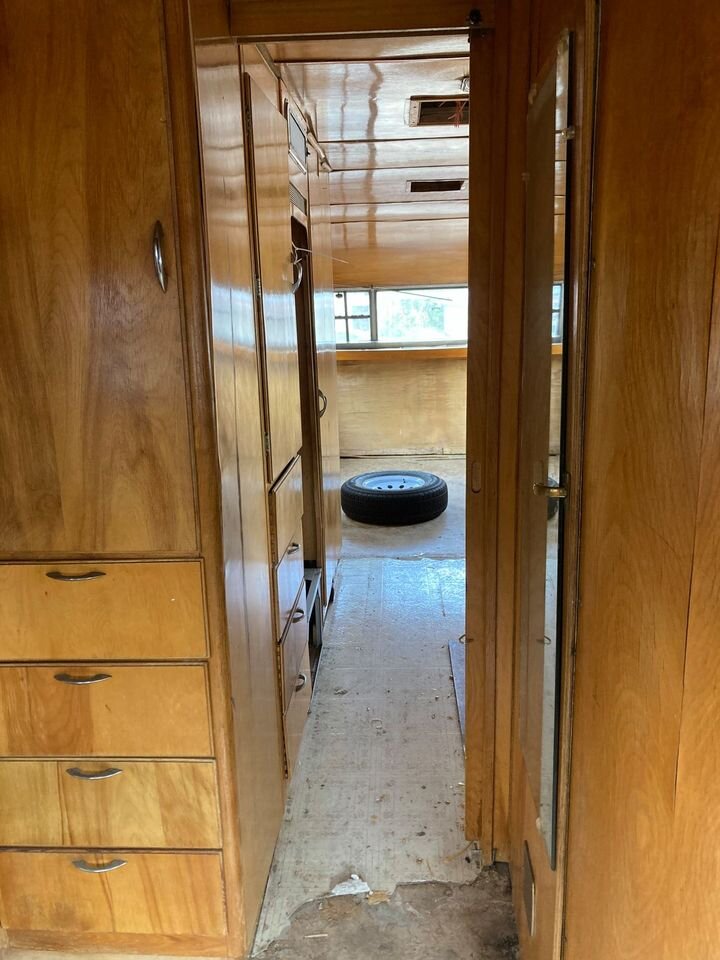
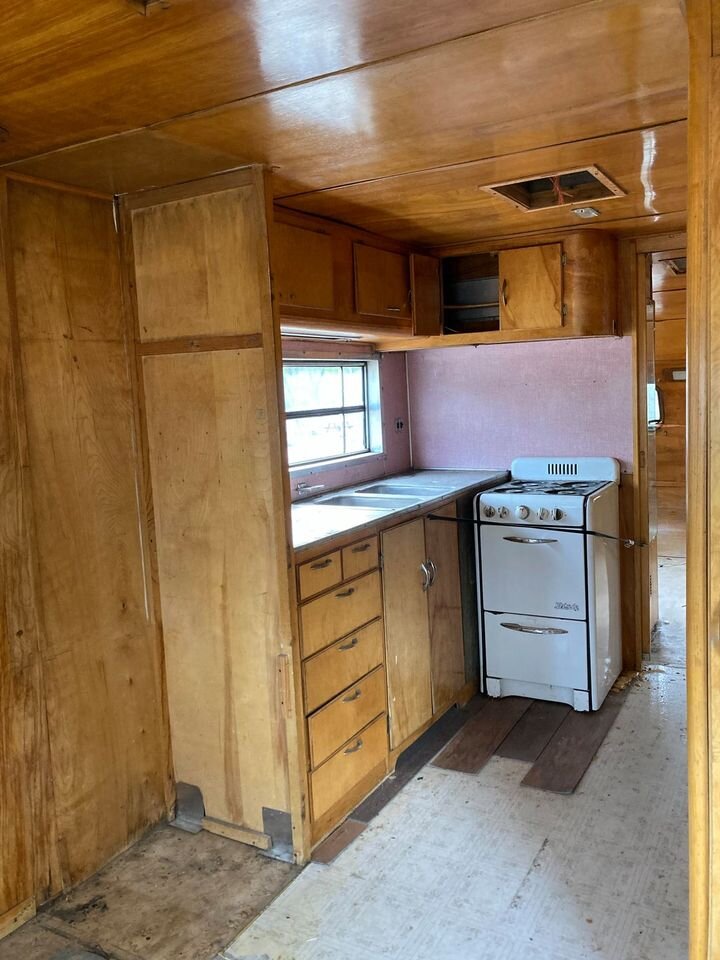
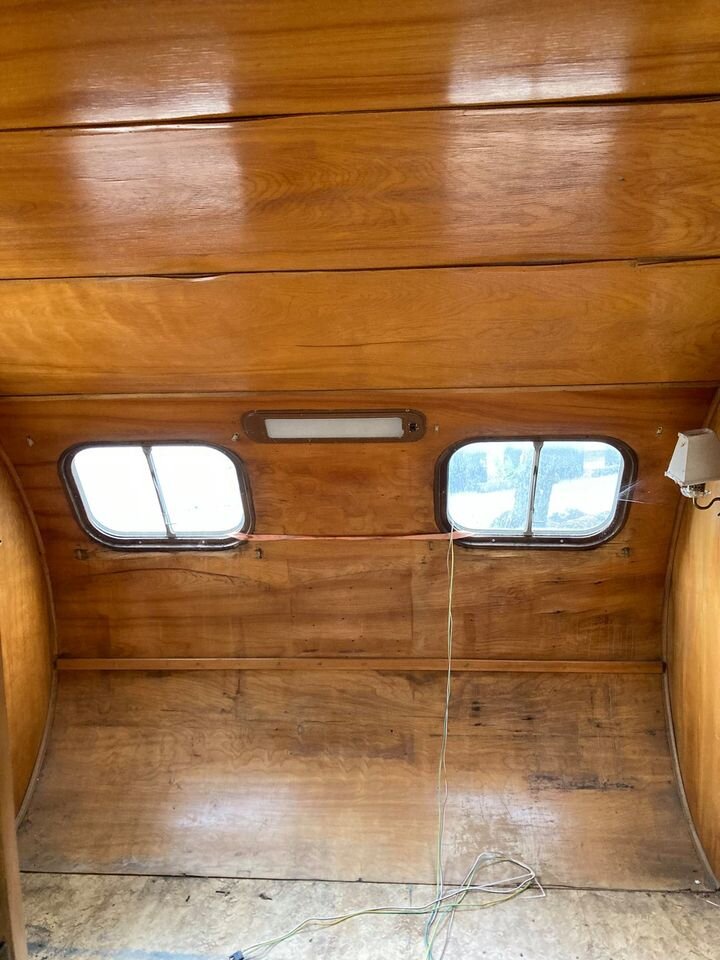
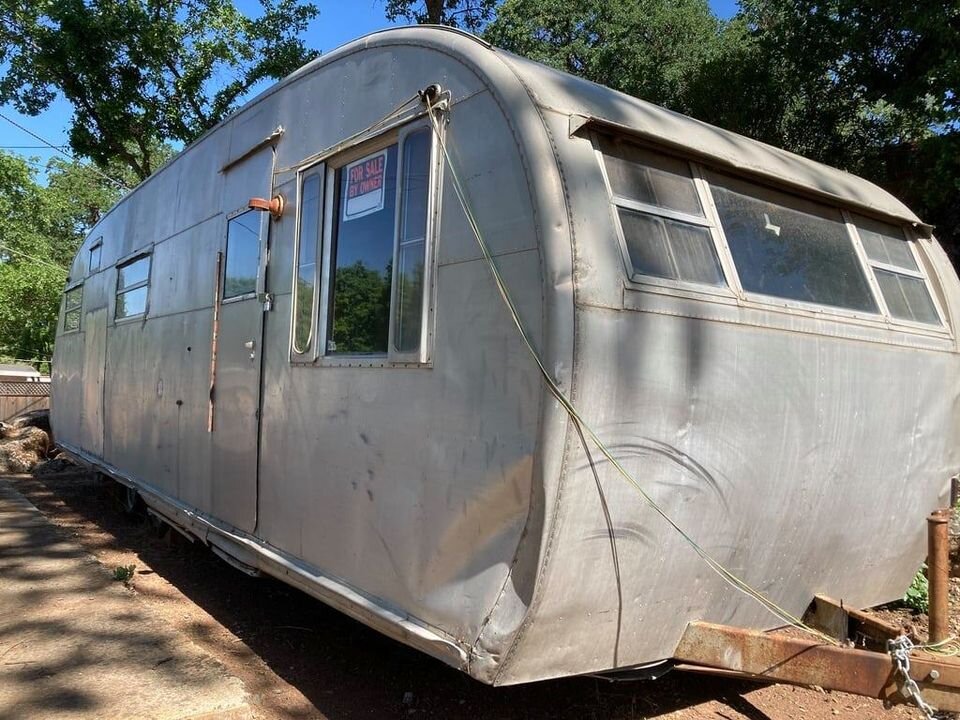
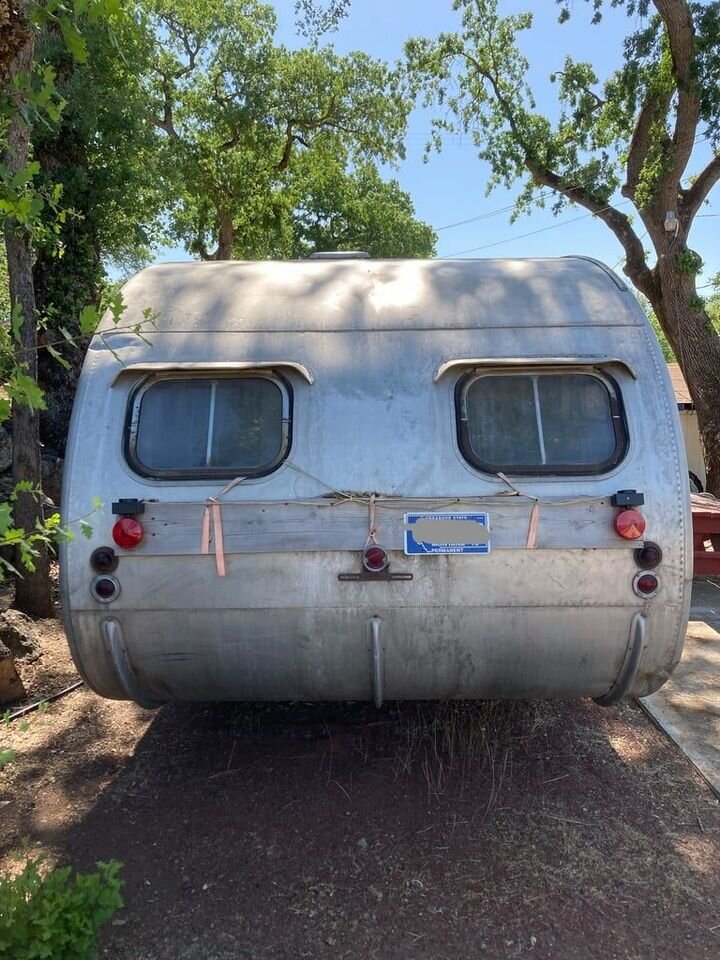
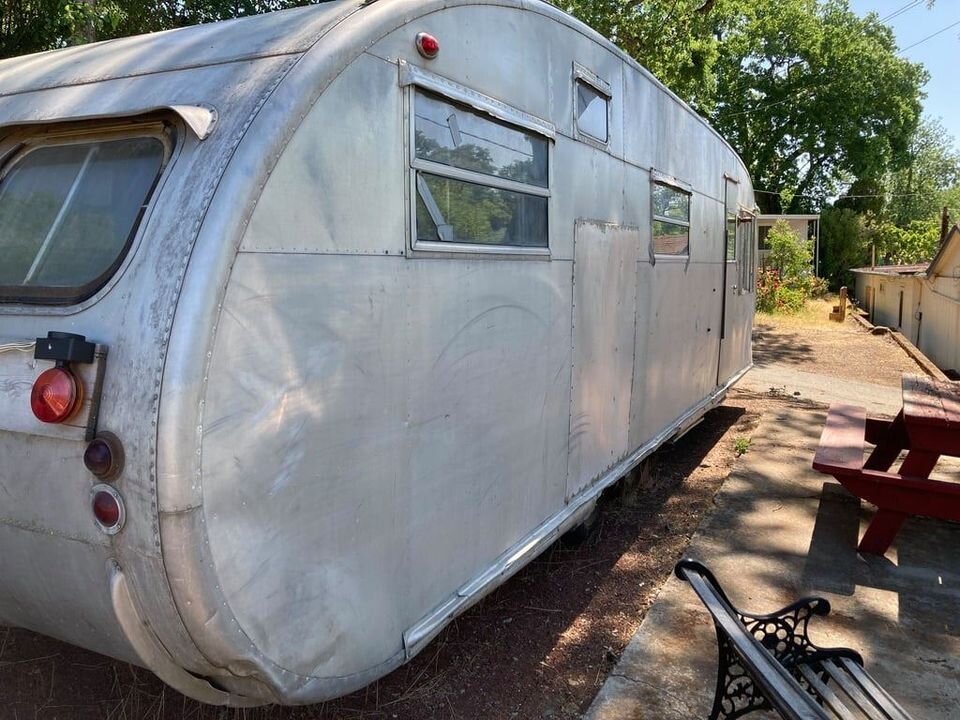

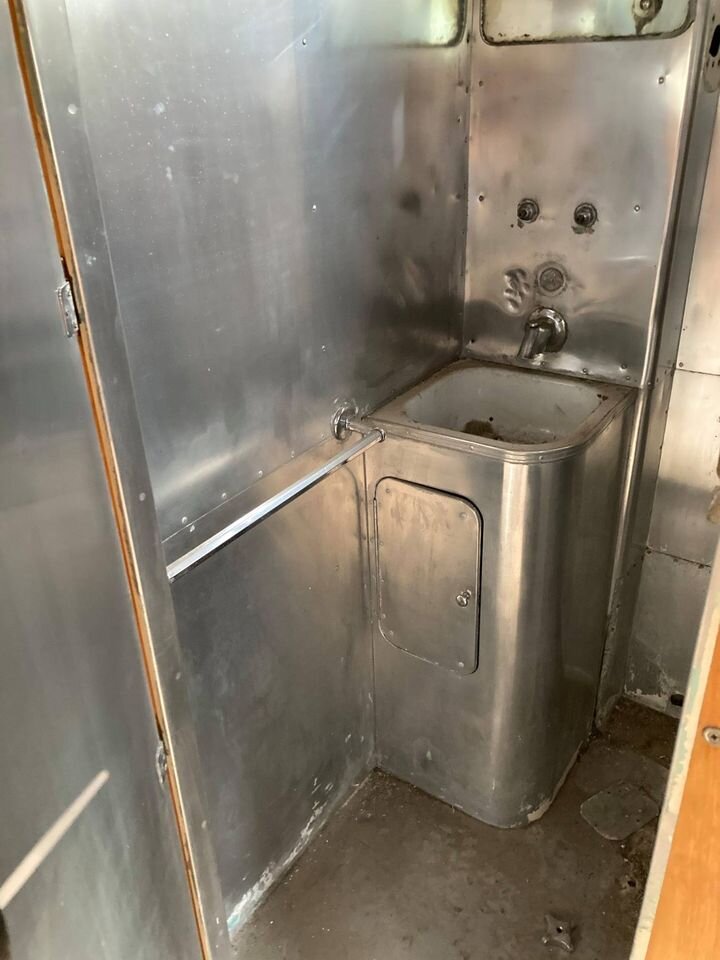
The demise
While Spartan’s products were very well made and rather lavish, the price of buying one was becoming more and more of a challenge for people. This was especially true in the fact that many other companies were now producing trailers of lesser quality but also at a far lower price.
To address this increased competition, Spartan introduced two new lines of trailers; the “Sparcraft” and the “Sparlane.”
The Sparcraft was an all-aluminum trailer that was constructed using rivets much like an Airstream, but without the compound curves that were expensive to produce. Furthermore, the interior of the Sparcraft trailers wasn’t as lavish as the Manor and Executive.
More insulting to the brand was the Sparlane, which was a boxy, affordable mobile home.
Toward the end the company created the “Crescendo” and “Carousel” lines with ultra modern styling featuring curving floor plans.
In 1962 the operation ceased and the company went into the insurance and finance business under the name Minnhoma Insurance company. The name “Spartan” was sold to the Spartan School of Aeronautics which continues to this day.
Spartan Collectibility
Like so many vintage items, the condition affects the value of these unique trailers tremendously. However, the way the Spartans were built means that they tend to still be viable candidates for restoration.
The quality of the materials and build used when they were manufactured means they’re often still very solid these many decades later.
Spartan trailers in really nice shape can be quite pricey, with an example 1960 Spartan Carousel listed at $65,000 as I write this.
Another factor that significantly affects the value of any vintage item is the originality. Those who have restored or maintained these trailers will find they have a much higher likelihood of getting a good price for them than those who have modified them in some way. The more original the trailer, the more it can be worth.
This is especially true of including parts that might be difficult to find. Even original window mechanisms, light switches, lighting fixtures and other small parts can make a notable difference when the trailer is sold.
Fortunately the quality of the materials used make it easier to restore these trailers. The birch interiors can be brought back to life by people with moderate wood working skills and the plumbing and electrical can also be restored, with the obvious recommendation to bring the electrical up to current standards.
Another factor that affects value is demand, of course. Surprisingly there were tens of thousands of these trailers made with some models significantly more than others, so finding a model that wasn’t very popular but is in great shape is always a coup in the collectible world.
The good news is there are clubs and organizations to help you with your restoration. As with any vintage item, if you can find a support group in the form of a club or resource center you’re in good shape. The information provided by these organizations can make the difference between frustration and fascinating.
There’s a company in Washington called Flyte Camp that has famously restored a Spartan trailer and sold it for $150,000. That company is well known for being well versed at combining beautiful restorations with hidden modern upgrades. Their gallery is well worth looking at.
Stay in a Spartan
As of this writing there are a few places that have vintage Spartan trailers you can stay in. One of those is Dos Palmas where you can lounge in a Spartan Imperial Mansion. Enchanted Trails RV Park in Albuquerque, New Mexico also has a Spartan you can stay in which is where some of our pictures came from.
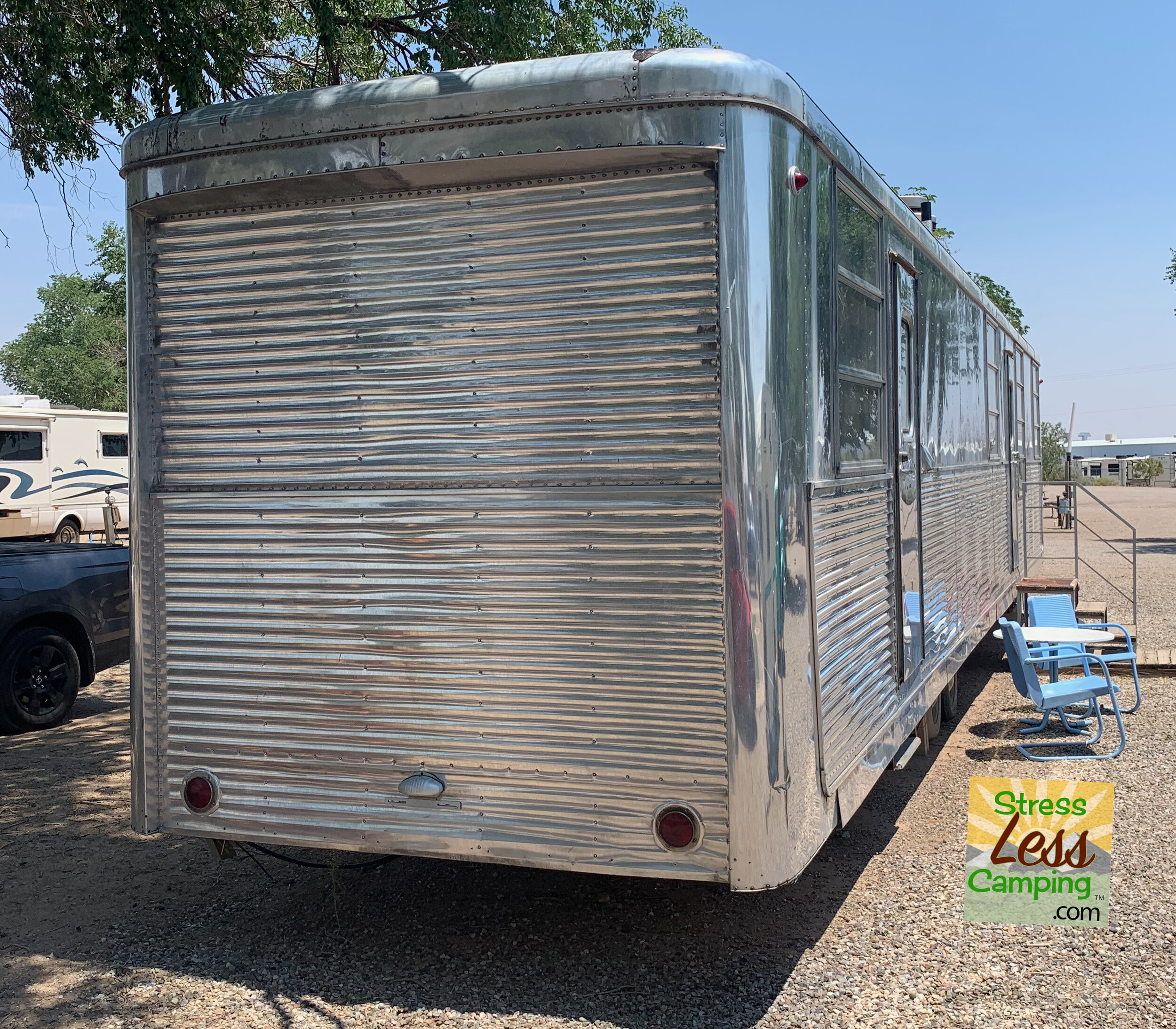

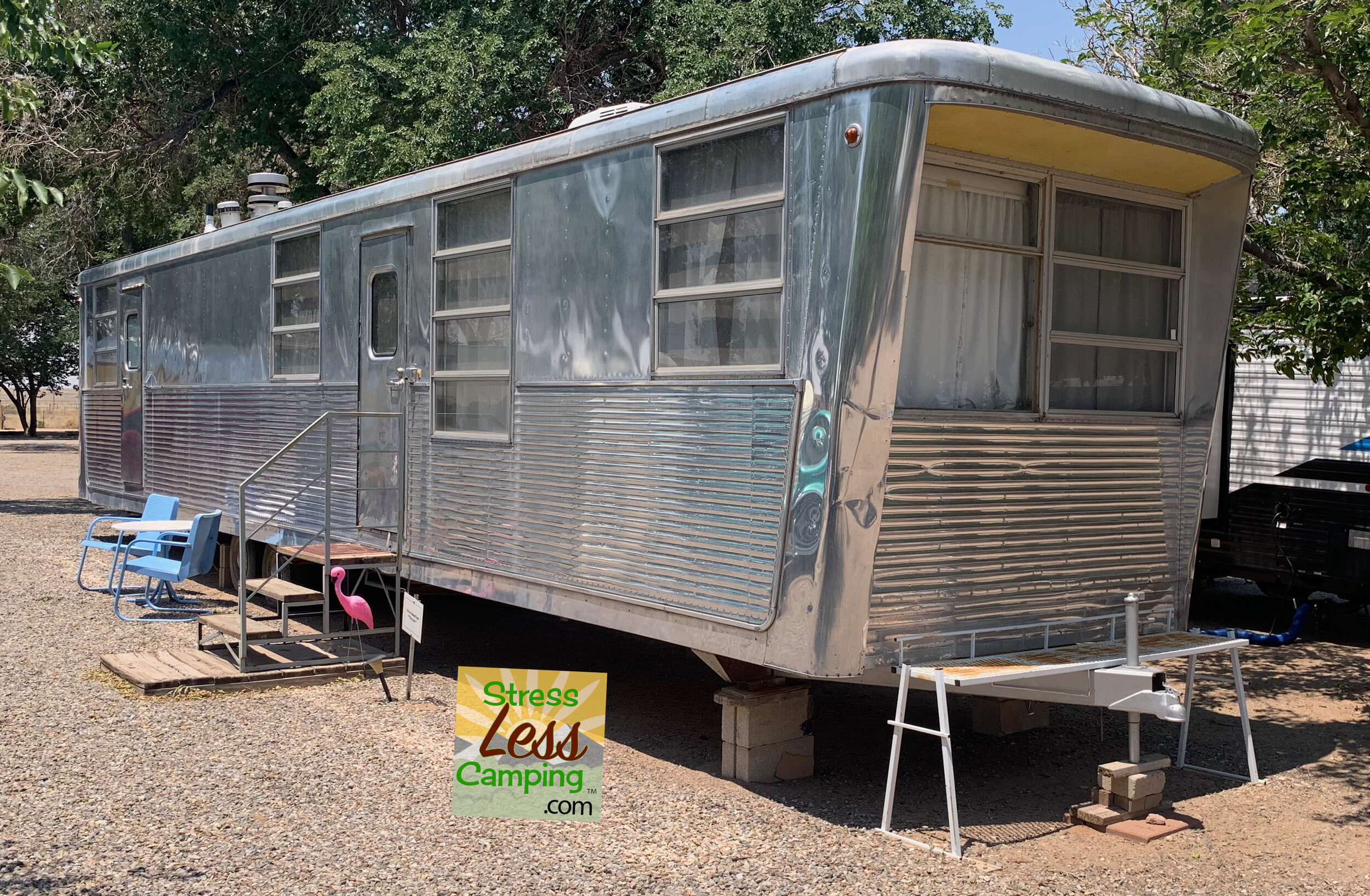
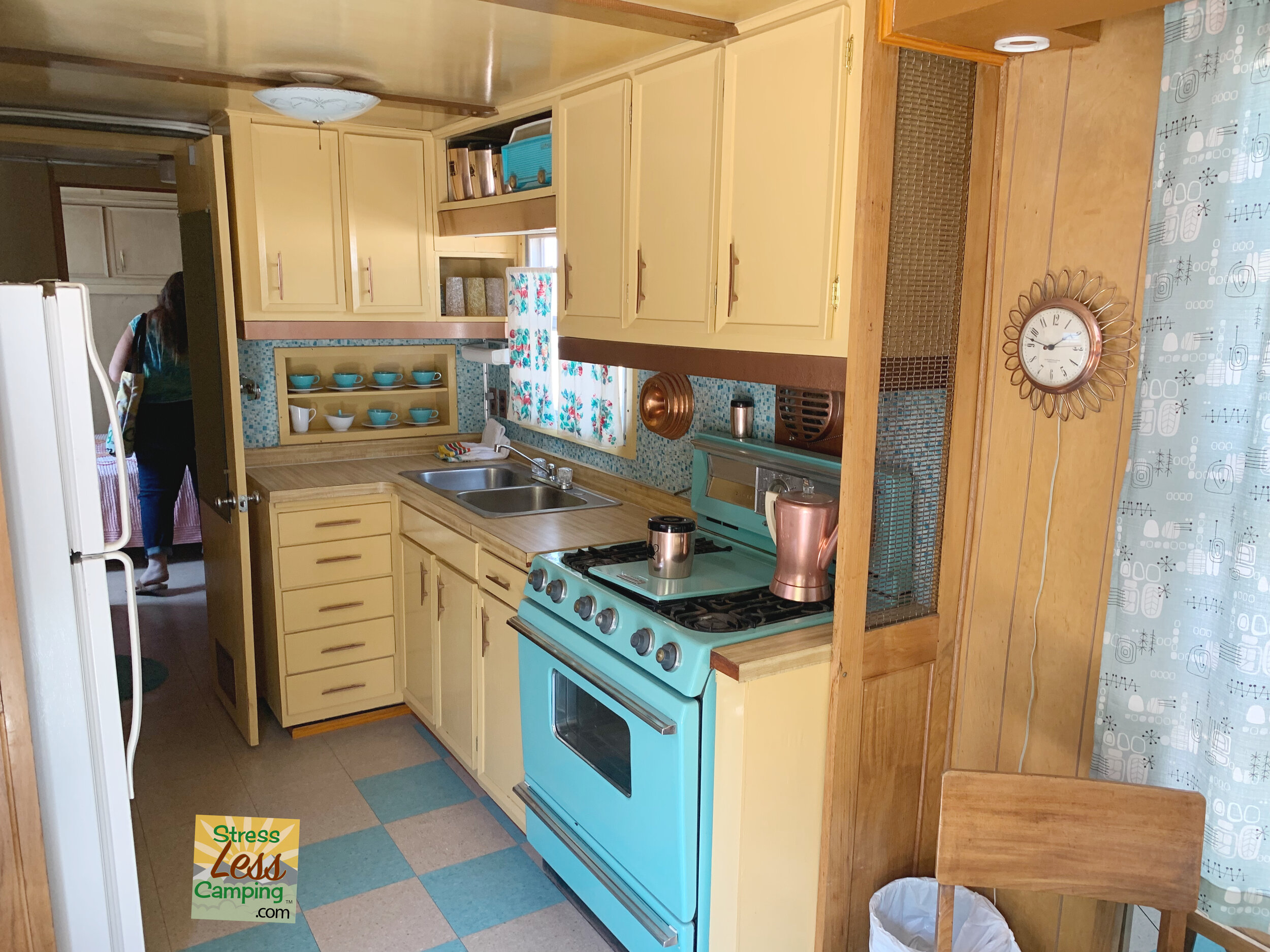
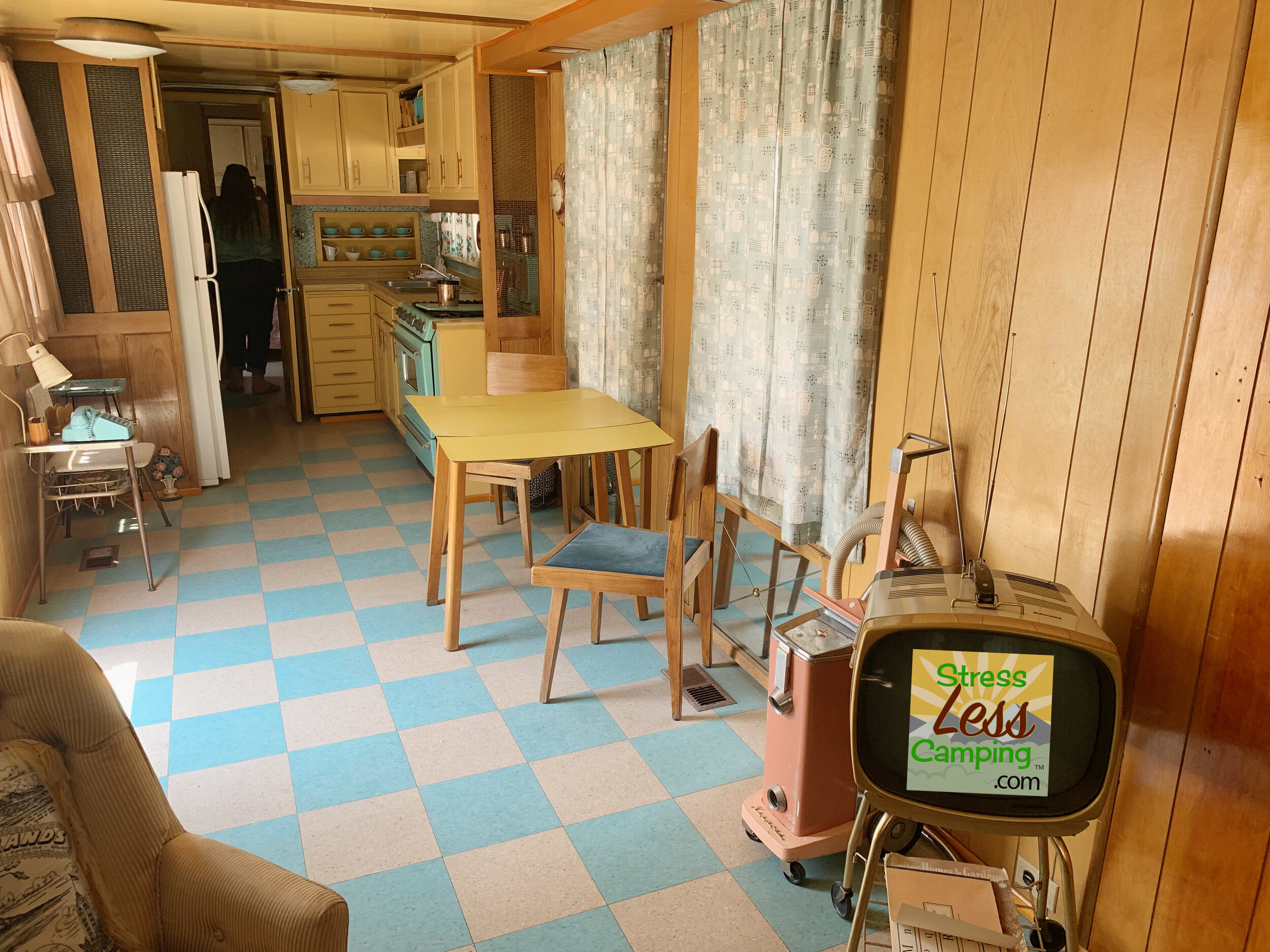

The Spartan trailer at the Enchanted RV Park in Albuquerque, New Mexico
Resources
Here are a few resources if you’re considering buying or restoring one of these trailers:
